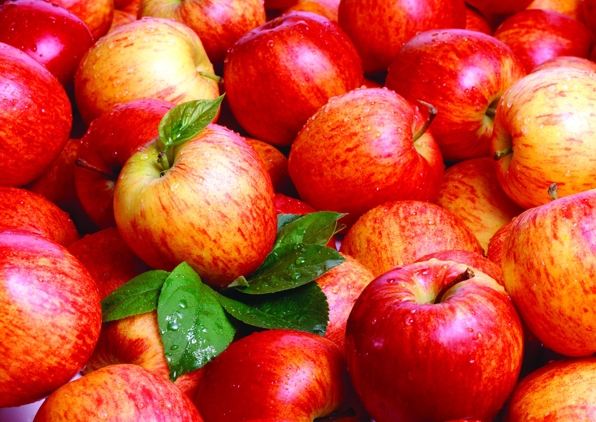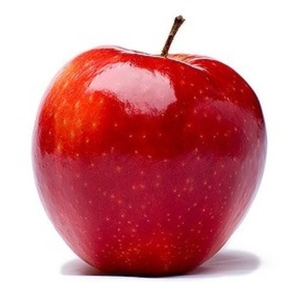How do you clean an apple before biting into it? Researchers warn that simply polishing it on your shirt or a towel isn’t sufficient to ensure that you got the pesticide residues along with the dust and dirt. But they’re also suggesting a better way to wash Fruit and Produce before eating it. The method employs a common household product, it’s cheap and it’s easy!
 Shiny skin and just-washed ‘dew’ on your apple are no guarentee
Shiny skin and just-washed ‘dew’ on your apple are no guarentee
that all the pesticides have been removed.
What you can’t see can hurt you!
That’s the message from researchers who’ve just published a report in the American Chemical Society’s Journal of Agricultural and Food Chemistry, warning that simply rinsing off or ‘polishing’ Fruit and Veggies is not sufficient to remove all dangerous substances from the skins of fruits and vegetables. This may not be a worry if you don’t eat Fruits and Veggies all that much (and shame on you!) bust most of us who care about what we eat and love to make our own meals from fresh ingredients could imbibe a lot of bad stuff over months or years…
What can you do?
When I was in Culinary School, they taught us to thoroughly wash all Fruit and Veggies in plain water before prepping or serving. We were told that simply polishing an Apple to shine it up was not good enough. And stories come out frequently in the media and online underlining the recommendation to wash Fruit and Produce. But pesticides are always being improved and our knowledge of them is always advancing. And, now, the experts say washing is not enough, anymore…
What do the experts recommend?
Among the most common pesticides in use today on Apples – one of the most common Fruits eaten with the skin on – are the fungicide Thiabendazole, which past research has shown can penetrate apple peels, and the insecticide Phosmet. Researchers applied them, to organic Apples and tested the ability of three different washing solutions to remove the chemicals.
Plain Water and a common food industry bleach solution proved far less effective than plain old baking soda in removing the pesticides. A 1 per cent baking soda/water solution removed 80 percent of the Thiabendazole and 96 percent of the Phosmet. But it took a 12 to 15 minute soak in the solution to obtain that result. No word from the researchers whether a stronger solution of Baking Soda or adding scrubbing action to the technique could reduce the waiting time. When I want an Apple, I want it NOW!
Anyway…
This technique is said to work for may pesticides on many different Fruits and Veggies. As I said at the outset, it’s cheap, easy and effective. So, I’m adding it to my arsenal of Kitchen Safety weapons.
~ Maggie J.

